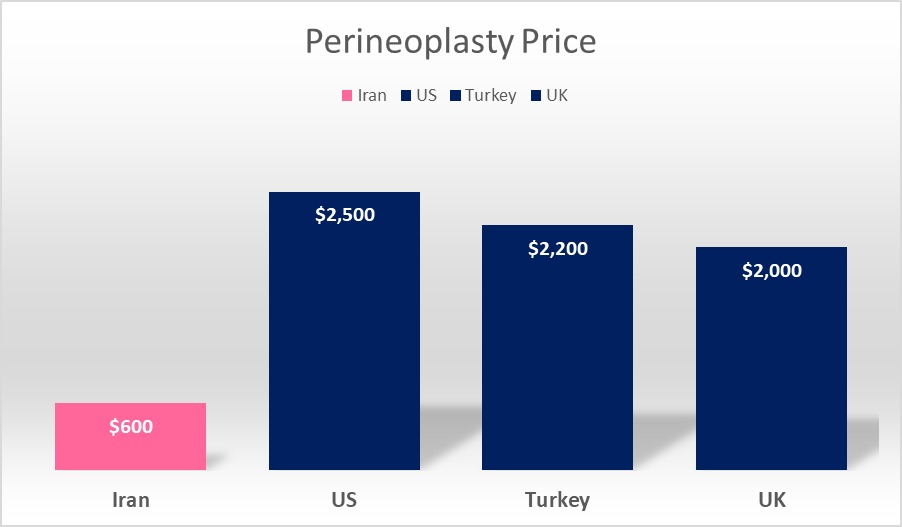Perineoplasty
Perineoplasty Success Rate
What is Perineoplasty or Perineocele Repair?
Perineoplasty, or perineorrhaphy, is a surgical procedure that tightens the entrance to the vagina and corrects damage to perineal tissue, the area between the vagina and rectum.
The procedure can be performed on its own to improve sexual function, but it’s frequently performed along with other vaginal rejuvenation procedures, such as vaginoplasty (which creates a tighter vaginal canal) and labiaplasty.
Most women who have a perineoplasty previously had an episiotomy—a surgical incision that widens the vaginal opening— during childbirth. Even when the incision has been closed with sutures, the sensation of vaginal laxity can remain, or the perineum can feel too rigid.
This plastic surgery procedure can also benefit women with vaginismus (involuntary contraction of the perineal muscles that makes sex painful), a thick hymen, or other congenital conditions.
A 2016 study reported that perineoplasty has a success rate of 87.9% in tightening a wide vagina, along with a partner satisfaction rate of 92.6% during sexual intercourse after 6 months. Complication rates were low.

What Are the Pros and Cons of Perineoplasty?
Pros
. Perineoplasty is considered a very safe procedure, with low complication rates.
. It’s an outpatient procedure, so you’ll be able to go home the same day.
. By addressing vaginal looseness, it can also improve sexual sensation for you and your partner.
. Patients who say perineoplasty was “Worth It” report that it increased their sexual satisfaction, confidence, and control of their bowels. Many of them even describe their results as “amazing.”
Cons
. You’ll need about a week of downtime after your surgery, with swelling and discomfort.
. You’ll have to avoid sexual activity for six to eight weeks after your surgery.
. Full recovery can take up to three months.
. Perineoplasty can’t be performed on women with pelvic organ prolapse, such as rectocele or cystocele; obstructed defecation; or urinary or anal incontinence. It's also not recommended for those looking to address dyspareunia, or pain during intercourse due to tight vaginal muscles.
What happens during a Perineoplasty?
The surgery itself is done under either general or local anesthesia with IV sedation. Using a laser or scalpel, your surgeon will make a V-shaped incision in the vaginal mucosa on the back of the vaginal wall, cutting from the vaginal entryway (introitus) through to the perineum, just above the anal opening.
They will suture the perineal body back together, tightening the levator muscles and covering them with fascia. Then they'll remove any excess skin and scar tissue before suturing the incision closed in a way that will look as natural as possible.
Many surgeons use stitches that dissolve on their own within the first week or two. If yours doesn't, your stitches will be removed at a follow-up appointment about a week after your procedure.
How Long Does It Take to Recover from Perineal Surgery?
The initial perineoplasty recovery period is a few days to a week, depending on whether your procedure was combined with a vaginoplasty. If your job involves heavy lifting or above-average physical activity, you may need to take two weeks off, to help you heal without injury.
You should be fully recovered from a perineoplasty within three months. You’ll have some bruising and swelling for up to two weeks, though most discomfort should subside within a week. Your doctor will likely prescribe pain medication to help keep you comfortable.
Avoid any penetration of the vagina, including tampons or sexual intercourse, for six to eight weeks afterward.
You’ll also need to avoid exercise that puts pressure on the surgical site. Most patients undergo physical therapy to strengthen their pelvic floor, after an initial healing period.
Your surgeon will give you perineoplasty aftercare instructions that should help mitigate potential complications—which include bleeding, infection of the incision, painful intercourse (which should become more comfortable over time), vaginal dryness, constipation, and vaginal and perineal tightness.
They will also recommend a gentle cleanser, to help reduce the risk of infection. Steer clear of irritating chemicals or heavily scented soaps as you heal.
About Iranian Surgery
Iranian surgery is an online medical tourism platform where you can find the best gynecological surgeons in Iran. The price of Perineoplasty in Iran can vary according to each individual’s case and will be determined by an in-person assessment with the doctor.
For more information about the cost of Perineoplasty in Iran and to schedule an appointment in advance, you can contact Iranian Surgery consultants via WhatsApp number 0098 901 929 0946. This service is completely free.
Source:
10 common questions about Perineoplasty success rate
[kkstarratings]


